A Complete Guide to Traffic Fines in Italy
Before we dive into the specifics of traffic fines in Italy, let me share an interesting story about my friend’s experience with the Italian authorities.
A few years ago, he rented a car in Naples. After just two days, the rental car had some issues, so he exchanged it for another one. He completed his trip and returned home to Milan with many fond memories, but never imagined he’d have to revisit those memories four years later—for an unfortunate reason.
He received a speeding ticket for the rented car. After reviewing the ticket, he noticed the infraction occurred with the first car he had returned. He contacted the rental agency, which assured him they would manage the situation.
Fast forward four more years, and he received another speeding ticket linked to the same vehicle. This time, the fine had ballooned to approximately €800 due to penalties and interest. After numerous calls to the rental agency and consulting with a lawyer, he received unexpected advice: it would be more cost-effective to pay the fine than to challenge it. I think you can guess what my friend ultimately decided to do.
I share this story not to frighten you, but to emphasize the seriousness of traffic fines in Italy.
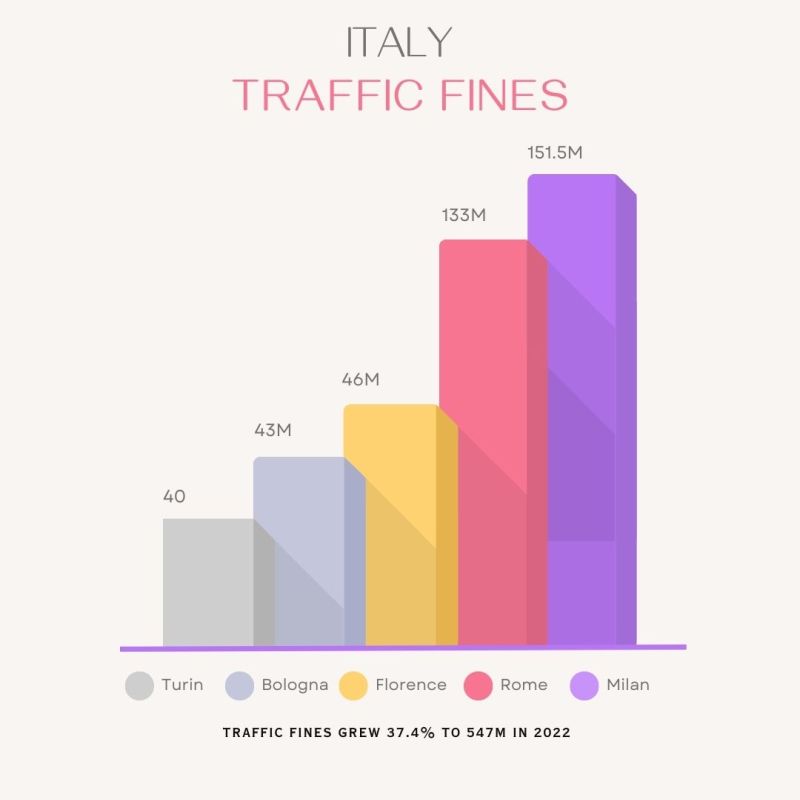
What Documents Will You Need to Drive in Italy?
- Driver’s License (required)
- Proof of Insurance (required)
- ID/Passport (required)
- Reflective Safety Vest (required to have in the car)
- Reflective Triangle (required to have in the car)
- Snow Chains in Winter (if your car has summer tires)
While it’s not mandatory, it’s advisable to carry a spare tire for emergencies. A few years ago, it was required to display proof of insurance on your car’s windshield, but that is no longer necessary—just keep the documentation in the vehicle.
What Types of Fines Can You Get in Italy?
Traffic fines in Italy vary based on the severity of the offense, with most classified as administrative sanctions. However, serious infractions may incur additional penalties. So, what are the common types of traffic violations in Italy?
- Speeding
- ZTL (Restricted Traffic Zones)
- Driving in Public Transport Lanes
- Parking Violations
- Failing to Pay Tolls
As an expatriate, it’s essential to understand that each country enforces its own traffic laws. Whether you agree with them or not, it’s crucial to follow them diligently. It’s amusing to hear locals complain about traffic fines while they meticulously adhere to speed limits in Switzerland, knowing they’ll face consequences if they don’t. Point taken!
Speeding
What constitutes speeding? Simply put, if you exceed the posted speed limit, you’re speeding. You might find yourself speeding if you’re driving at 50 km/h in a 30 km/h zone! Therefore, it’s vital to be aware of the different speed limits in various areas of the city.
Speed limits are clearly posted, and there are standard regulations based on the type of road. I trust you were attentive during your driving classes to earn your Italian license.
Speed limits will be indicated when you enter the country and at every point of change in speed limits.
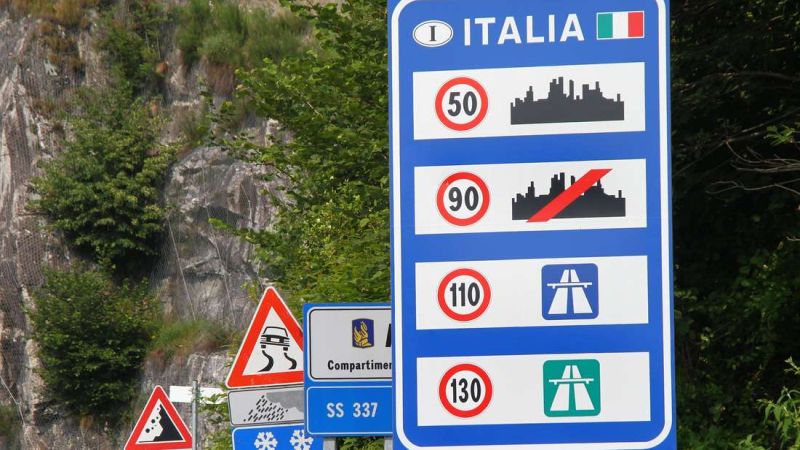
Keep in mind that these limits apply to all experienced drivers. If you’ve held your Italian license for less than three years, you’re still classified as a novice driver—regardless of your age or experience on the Autostrada! You must honor the speed limits designated for Neopatentati (newly licensed drivers).
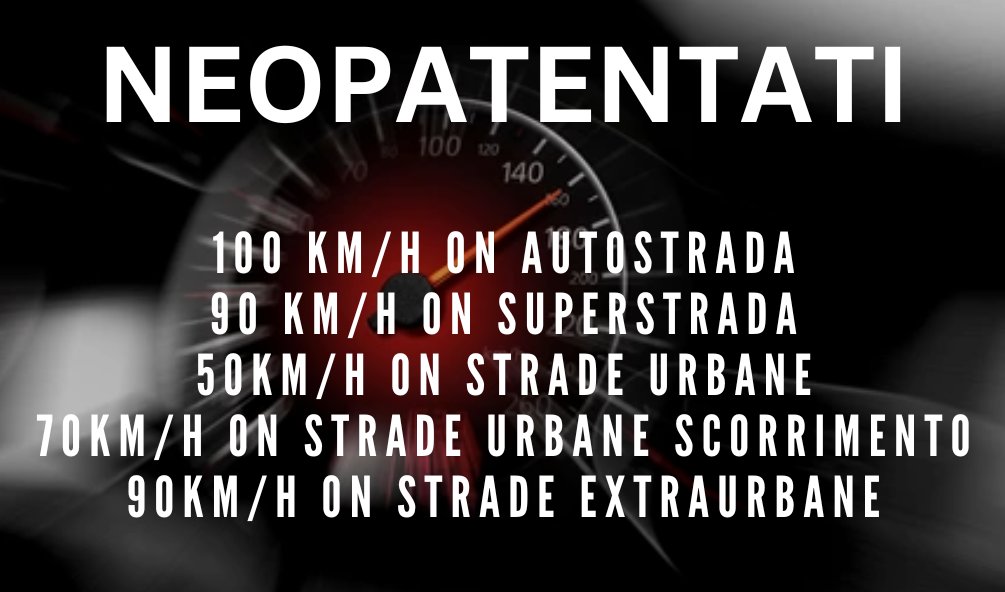
A final note: traffic fines in Italy come with both minimum and maximum penalties for each violation.
Traffic Fines for Speeding in Italy
Many cities and highways are equipped with cameras (Autovelox) that flash when you’re exceeding the speed limit.
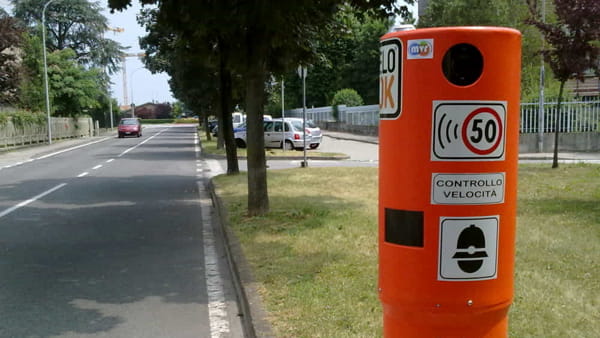
By law, these speed cameras must be clearly marked. Additionally, people are often aware of mobile speed traps, leading many drivers to slow down near known locations and then speed up once they’re past, which has prompted the installation of average speed cameras (Tutors) on certain highways. These devices measure the average speed over a designated distance.
| Speed Range | Administrative Fine |
| Up to 10 km/h | €41 to €175 |
| 10 km/h to 40 km/h over | €175 to €695 |
| 40 km/h to 60 km/h over | €544 to €2,174 |
| More than 60 km/h over | €847 to €3,389 |
Note: The values presented here are for reference and may be updated at any time in Italy.
Most Autovelox are set to activate when your speed exceeds by 5 km/h or 5% of the speed limit. For instance, if you’re driving at 54 km/h in a 50 km/h zone, you won’t be fined. Similarly, if you drive at 136 km/h on the Autostrada, you won’t be penalized because 5% of 130 km/h equals 136.5 km/h.
However, be cautious: fines increase by one-third if you’re caught exceeding the speed limit at night, between 10 PM and 7 AM. The good news is that if you pay your fine within five days of receiving it, you can benefit from a 30% discount. Think twice—do you want to take advantage of this discount?
The figures presented here are to help you understand the penalties; if you get caught driving at 137 km/h on the Autostrada, LetsTraveliamo is not responsible!
What Is ZTL (Restricted Traffic Zones) in Italy?
ZTL, or “Zona Traffico Limitato,” refers to restricted traffic zones in Italian cities.
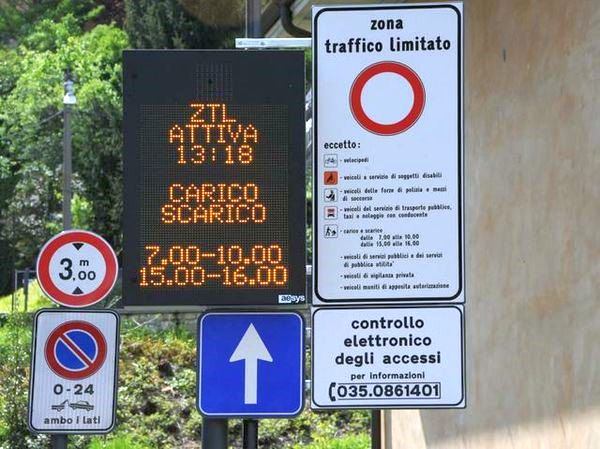
Access to these areas is restricted to vehicles with the appropriate permits, aimed at reducing pollution and traffic congestion in cities like Milan. Restrictions may vary based on the time of day or the type of vehicle.
So, what are the fines for violating these restrictions? They typically range from €80 to €300. It’s easy to overlook these warnings, especially if you’re unfamiliar with the city. However, modern navigation systems can help you avoid ZTL areas, so use them wisely.
Be aware that some cities may consider multiple entries into the same ZTL on the same day as multiple violations. Therefore, be cautious.
Note: If you are staying in a hotel within a ZTL, you can ask the hotel to inform the local authorities of your license plate in advance, so you won’t be fined for entering the zone.
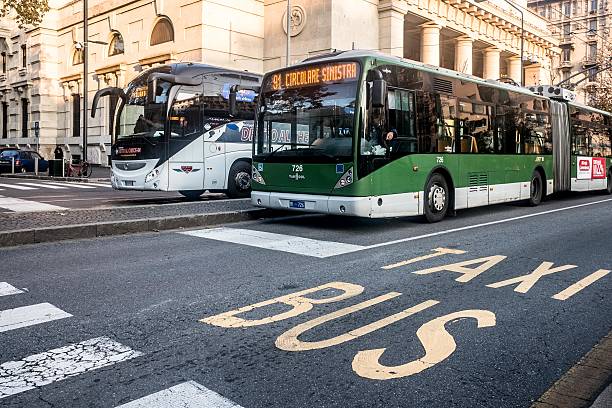
Driving in bus lanes is also treated as a type of ZTL violation. These lanes are clearly marked with signs before you enter and along the route. If you enter these lanes, be prepared to pay a fine ranging from €80 to €232.
Parking Fines in Italy
I’ve often heard Italians say they set aside hundreds to thousands of euros every year for traffic fines in Italy, which is considered an essential part of car ownership costs here. A significant portion of these fines is attributed to speeding and parking violations. Finding parking in larger cities like Milan can be particularly challenging.
Often, people struggle to find an available parking space and resort to parking in yellow-lined areas reserved for residents. Some choose to disregard parking regulations altogether. While you may get lucky sometimes, it’s not advisable to make a habit of it.
| Parking Violations | Fines in Euros |
| No-parking Areas | €41 |
| Parking in Blue Lines Without Payment | €41 |
| Parking in Reserved or Yellow Lines | €84 to €335 |
| Failure to Display Parking Meter Receipt | €42 to €173 |
| Parking on Sidewalks | €84 to €335 |
It’s not always intentional when people fail to pay for parking; sometimes they genuinely forget. How does this happen?
Many parking areas with blue lines operate on a time-based system, requiring payment before leaving the vehicle. People often pay for an hour, assuming they will finish their business in that time, only to be delayed and end up with a fine. The same applies if they forget to display their parking meter receipt.
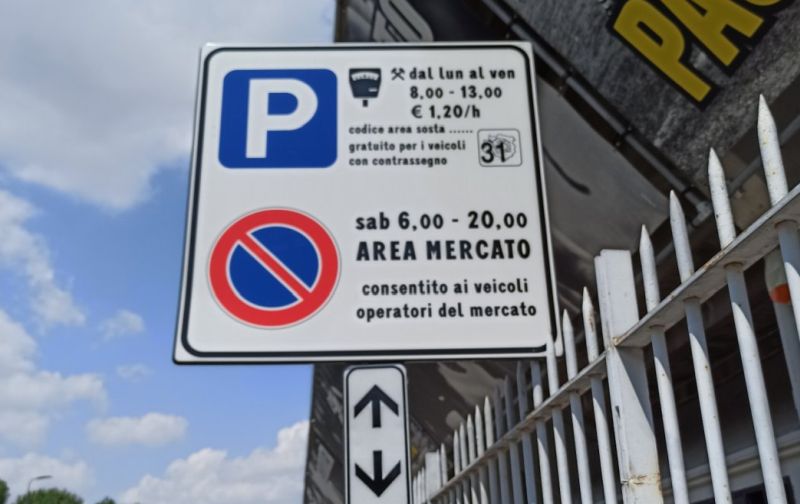
Fortunately, apps like EasyPark can be lifesavers in such situations, allowing you to extend your parking time from your phone. While it used to be free, they now charge a service fee starting at only 29 cents.
Another common oversight is parking in areas scheduled for street markets (Mercato) or street cleaning. Signs indicate when parking is prohibited, but they can easily be missed, especially by tourists. The signs show the specific days and times when cleaning vehicles will be present.

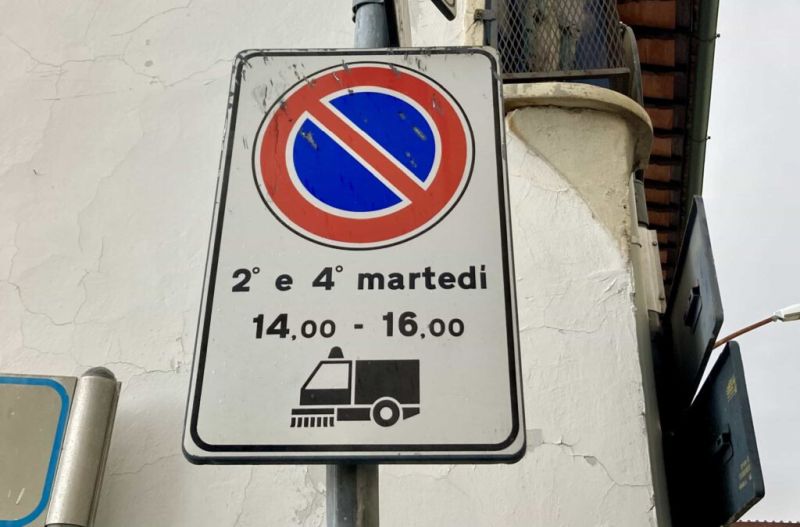
Imagine parking in a paid area, paying the required fee, then enjoying a restful night at your hotel only to discover the next morning that your car is missing. Yes, it may have been towed at your expense for improper parking, resulting in not only a fine but also the towing fee to reclaim your vehicle from the local authority’s office.
What Other Types of Traffic Fines Exist in Italy?
In addition to these common traffic fines, Italy has a wide range of other offenses that also incur penalties. Here’s a quick overview:
| Offense | Fine in Euros |
| Running a Red Light | From €175 |
| Driving Without a Seatbelt | From €85 |
| Using a Mobile Phone While Driving | From €165 |
| Driving Under the Influence of Alcohol | €155 to €1,000 |
How to Pay Traffic Fines in Italy
The payment process varies depending on the local municipality where the offense occurred. Generally, you will receive two payment options:
- Discounted payment with a 30% discount if paid within five days.
- Standard payment amount if paid after five days.
You can pay these fines (Multa) at any tobacco shop, post office, or online using your SPID and PagoPA accounts.
If you’re living outside Italy and concerned about how to pay the fines, don’t worry! There’s an online application called Easypol that can assist you.
Note: I have not personally used this service, but I found it online and cannot endorse it as a recommendation.
I would love to hear about your experiences with traffic fines in Italy, be they minor or significant. Sharing your story might help someone else navigate the complexities of driving here!
So please, feel free to share your thoughts in the comments below.



